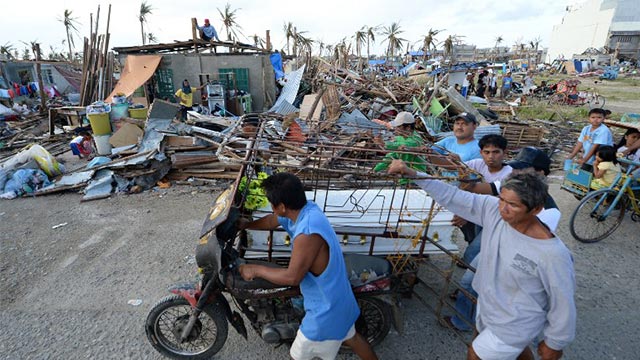SUMMARY
This is AI generated summarization, which may have errors. For context, always refer to the full article.

MANILA, Philippines – Asia is more vulnerable to disasters than any part of the world. How can it cope better?
Iwan Azis, Asian Development Bank (ADB) Office of Regional Economic Integration head, said one way was to create a fund that could be used for disaster risk reduction and response.
In a press briefing on Tuesday, April 22, Azis said a regional task force was “trying to formulate what kind of mechanism we need that can deal with disasters.”
He said the mechanism could be similar to the Chang Mai Initiative, a fund set up by ASEAN + 3 (China, Japan and South Korea) to manage liquidity problems in the aftermath of the 1997 Asian financial crisis.
He stressed it was important to “pool resources together” to mitigate the costs of disasters, which were expected to increase in both frequency and intensity over the years.
Azis presented the highlights of ADB’s Asian Economic Integration Monitor Tuesday.
According to the report, Asia has borne almost half of the estimated global economic costs of catastrophes in the last 20 years – roughly $53 billion annually. Over the past 4 decades, direct physical losses from disasters in the region significantly outpaced the growth in gross domestic product.
“This is quite a serious matter. That’s why we are urging the region to cooperate better,” Azis said.
“You may have a wonderful macroeconomic policy, wonderful industrial and trade policies, but if a disaster struck it can wipe out a big chunk of the accomplishment that you have.”
Financing, insurance
In its report, ADB said countries in the region may reduce exposure to disaster-related losses by transferring or sharing risk through specifically designed financial instruments such as insurance.
“Asia lags behind the rest of the world in developing insurance and capital market solutions that enable workable risk transfer markets that serve local governments, businesses and homeowners. This reduces the region’s resilience,” it explained.
Earlier, reinsurance group Swiss Re reported that natural and man-made disasters caused $140 billion worth of damage globally last year, but insured losses accounted for only about $45 billion. (READ: Disasters cause $140B losses globally in 2013)
The most expensive disaster for insurers was the massive flooding in central and eastern Europe, with Germany, the Czech Republic, Hungary and Poland hardest hit.
However, while rich countries saw the most expensive single disasters in terms of insurance claims – the norm, given their wealthier economies and extensive insurance penetration – it was Asia that continued to bear the brunt of lives lost and overall economic damage.
The vast majority of the 26,000 disaster deaths last year – up from 14,000 in 2012 – were in developing nations.
Typhoon Yolanda (Haiyan) in the Philippines in November brought some of the strongest winds ever recorded, coupled with heavy rains and storm surges.
Some 7,500 died or went missing, and over 4 million were left homeless.
Yolanda inflicted $12.5 billion in economic damage, of which insured losses represented just $1.5 billion, Swiss Re said.
The Philippine government is now spending billions of pesos to rehabilitate Yolanda-ravaged areas. – Rappler.com
Add a comment
How does this make you feel?
There are no comments yet. Add your comment to start the conversation.